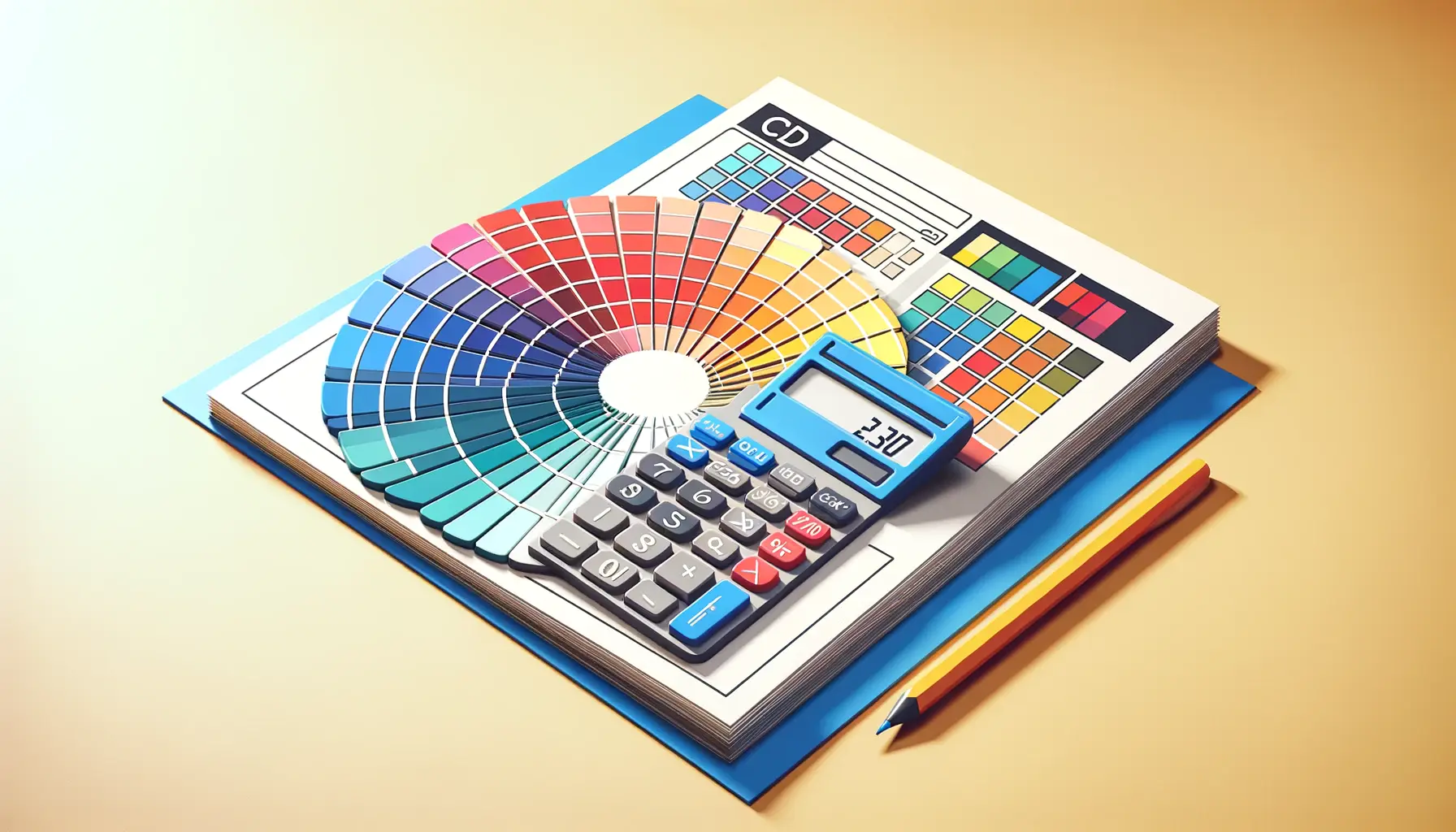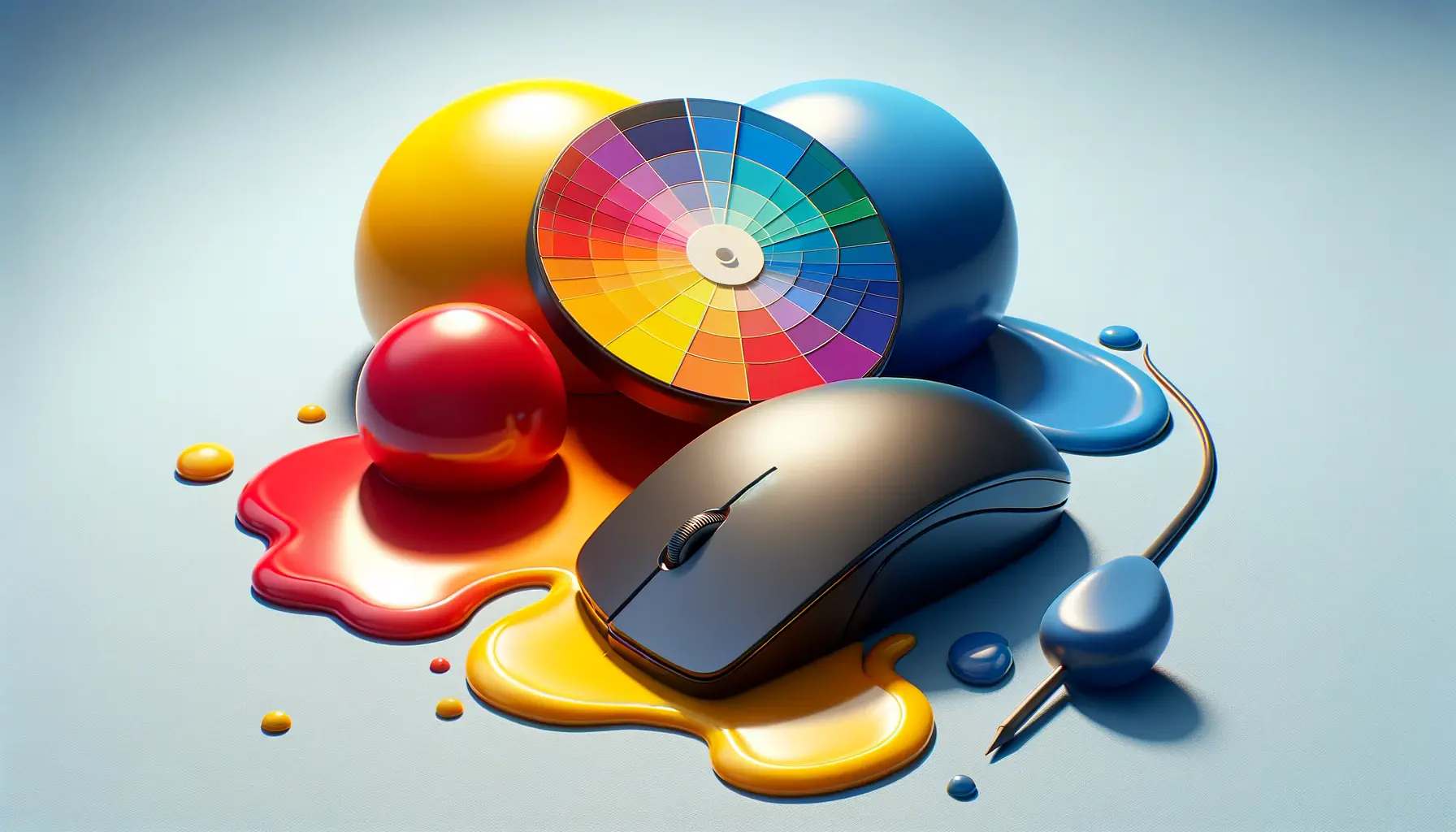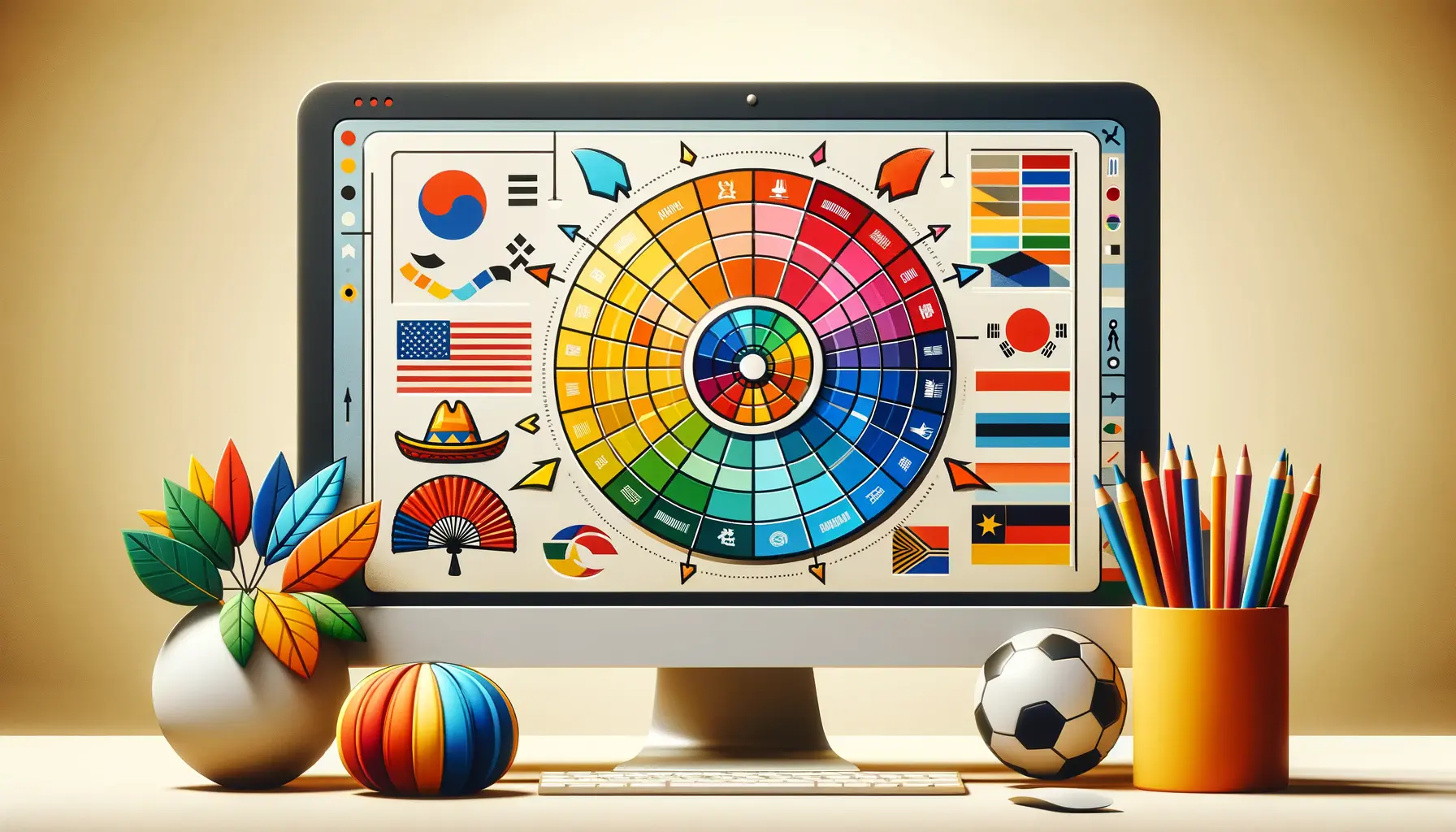In the realm of web design, the application of color theory is not just an aesthetic choice but a pivotal strategy that enhances user experience and engagement.
The interplay of colors on a website can significantly affect how users perceive and interact with the content, making it crucial for web designers to understand and apply color theory effectively.
This comprehensive guide aims to delve deep into the nuances of color theory in the context of responsive web design, ensuring that websites not only look appealing across different devices but also communicate and function seamlessly.
Responsive web design is about creating web pages that look and work well on any device, be it a desktop, a tablet, or a smartphone.
This approach requires a keen understanding of how colors interact, contrast, and complement each other to maintain readability and usability in various screen sizes and resolutions.
By leveraging color theory, designers can create a cohesive, accessible, and visually engaging online environment that resonates with the diverse needs and preferences of the digital audience.
- Understanding the Basics of Color Theory
- Responsive Design and Color Accessibility
- Optimizing Color for Different Devices and Screens
- Color Trends and Responsive Design
- Effective Use of Color in Navigation and UI Elements
- Integrating Color with Typography and Imagery
- Maximizing Engagement Through Color Psychology
- Conclusion: Harnessing Color Theory for Enhanced Responsive Web Design
- FAQs: Color Theory in Responsive Web Design
Understanding the Basics of Color Theory
The Color Wheel and Color Harmony
At the heart of color theory lies the color wheel, a fundamental tool that helps designers understand the relationships between colors.
Comprising primary, secondary, and tertiary colors, the color wheel serves as a visual representation to create color harmony in web design.
Harmony is achieved when colors are combined in a way that is pleasing to the eye, creating balance and a sense of visual order.
For responsive web design, this principle ensures that the website’s color palette remains effective and appealing across different devices.
Color harmony in web design is not just about choosing colors that look good together.
It’s about creating an emotional resonance with the viewer, which can significantly affect user engagement and conversion rates.
By carefully selecting a color scheme that aligns with the brand’s identity and message, designers can evoke the desired emotional response, whether it’s excitement, trust, or calmness.
Color Psychology in Web Design
Color psychology plays a crucial role in how users perceive and interact with a website.
Different colors can evoke different feelings and reactions.
For instance, blue is often associated with trust and reliability, making it a popular choice for corporate websites.
Green, on the other hand, is associated with nature and growth, often used in eco-friendly or wellness-related websites.
Understanding the psychological impact of colors can help designers make informed choices that enhance the user’s experience and encourage specific behaviors.
Incorporating color psychology into responsive web design requires a nuanced approach.
Designers must consider how color choices translate across various devices and screen sizes, ensuring that the intended emotional impact remains consistent.
This consideration is vital for maintaining a strong brand identity and user engagement across all platforms.
Effective use of color theory can significantly enhance the usability and aesthetic appeal of a website, making it more engaging and accessible to users across different devices.
Responsive Design and Color Accessibility
Ensuring color accessibility is a critical aspect of responsive web design, where the goal is to make web content accessible to as many people as possible, including those with visual impairments or color blindness.
This part of the guide focuses on how to apply color theory to enhance accessibility and ensure that your website is usable and enjoyable for a broad audience, regardless of the device they use.
Color contrast is one of the most crucial factors in color accessibility.
High contrast between background and text colors is essential for readability, especially on smaller screens or in varying lighting conditions.
The Web Content Accessibility Guidelines (WCAG) provide specific contrast ratios to aim for, ensuring that text is easily distinguishable from its background.
- Choosing Accessible Color Palettes: When selecting colors for a responsive website, it’s important to test color combinations for contrast and readability across different devices. Tools like color contrast checkers can help designers adhere to accessibility standards.
- Simulating Color Vision Deficiencies: Using tools to simulate how your color choices appear to users with different types of color vision deficiencies can guide you in creating an inclusive design. This step is crucial for understanding how your design choices impact users with visual impairments.
Implementing Adaptive Color Schemes
Adaptive color schemes can significantly improve the user experience by automatically adjusting to the user’s preferences or environmental conditions.
For example, a website can switch to a dark mode color scheme in low-light conditions or based on user preference settings.
This adaptability not only enhances usability but also demonstrates a commitment to accessibility and user comfort.
Responsive web design challenges designers to think beyond static color schemes and consider dynamic, adaptive approaches that respond to user needs and contexts.
By prioritizing color accessibility, designers can create more inclusive web experiences that cater to a diverse audience, ensuring that everyone, regardless of their visual abilities or the device they use, can access and enjoy the content.
Incorporating adaptive color schemes and prioritizing accessibility in color choices can lead to a more inclusive and user-friendly web experience.
Optimizing Color for Different Devices and Screens
With the vast array of devices and screen types users access websites from, optimizing color for different devices and screens becomes a critical task in responsive web design.
This optimization ensures that the visual experience remains consistent and engaging across all platforms, from high-resolution desktop monitors to the smaller screens of smartphones and tablets.
Understanding how colors display on various devices is key to this optimization process.
Different screens have different color capabilities, and what looks vibrant on one screen might appear washed out on another.
Designers must consider these variations to ensure that the website’s color palette delivers the intended experience across all devices.
- Color Calibration and Testing: Regularly calibrating your design tools and conducting extensive testing across multiple devices can help identify and address discrepancies in how colors are displayed. This step is crucial for maintaining color consistency across devices.
- Responsive Color Schemes: Developing color schemes that adapt to the characteristics of the user’s device, such as screen size and resolution, can enhance the visual experience. For instance, using brighter colors for smaller screens can improve readability and user engagement.
Utilizing CSS and Web Technologies
Modern CSS and web technologies offer powerful tools for creating responsive and adaptive color schemes.
CSS media queries, for example, allow designers to apply different color styles based on the device’s features, such as its width, height, or orientation.
This capability is instrumental in creating a cohesive and accessible design that adjusts to the user’s context.
Furthermore, CSS variables (custom properties) enable designers to define a color scheme centrally and apply changes globally, making it easier to adjust colors for different devices or user preferences.
This approach simplifies the management of color schemes in responsive design, ensuring consistency and flexibility.
Leveraging CSS and web technologies for adaptive color schemes is essential for creating a responsive design that offers a seamless user experience across all devices.
Color Trends and Responsive Design
The dynamic nature of web design means that color trends evolve rapidly, influenced by cultural shifts, technological advancements, and user preferences.
Staying abreast of these trends is crucial for designers aiming to create fresh and relevant websites.
However, incorporating trendy colors into responsive web design requires a balanced approach to ensure that the design remains accessible and functional across different devices.
Understanding current color trends can inspire designers to experiment with new palettes and gradients, but it’s essential to consider how these colors will look on various screens and in different contexts.
A color that’s trendy and vibrant on a high-definition monitor might not translate as well on a mobile device, affecting the user’s perception and interaction with the website.
- Adapting Trends to Responsive Design: When integrating color trends into responsive web design, it’s important to test how these colors perform across different devices. This testing can help ensure that the design remains visually appealing and effective, regardless of how users access the site.
- Future-Proofing Your Design: While it’s tempting to adopt the latest color trends, designers should also aim to create a timeless base for their website’s color scheme. This approach involves selecting a foundational palette that can easily incorporate trendy accents without undergoing a complete overhaul, ensuring longevity and adaptability of the design.
Creating a Flexible Color Palette
A flexible color palette is key to incorporating color trends into responsive web design effectively.
This flexibility allows designers to update colors easily without affecting the overall usability and accessibility of the website.
By establishing a versatile base palette and using trendy colors as accents, designers can keep the website’s design current while maintaining a consistent user experience across all devices.
Incorporating color trends into responsive web design not only enhances the visual appeal of a website but also signals to users that the brand is aware of and responsive to current design movements.
This awareness can increase user engagement and contribute to a positive perception of the brand.
However, it’s crucial to balance trendiness with functionality, ensuring that the website remains accessible and enjoyable for all users.
Balancing color trends with the principles of responsive design ensures that websites are both visually engaging and accessible across all devices.
Effective Use of Color in Navigation and UI Elements
The strategic use of color in navigation and user interface (UI) elements is a cornerstone of effective web design, guiding users through the website intuitively and seamlessly.
In responsive web design, where screen real estate varies widely across devices, color becomes an even more critical tool for creating a coherent and user-friendly navigation experience.
Color can highlight important navigation elements, differentiate between interactive and static elements, and indicate the current location within the website.
However, the challenge lies in ensuring that these color cues remain clear and effective across different devices, adapting to the constraints and opportunities of each screen size and resolution.
- Highlighting Key UI Elements: Using contrasting colors or shades to distinguish buttons, links, and call-to-action (CTA) elements can significantly improve user engagement and the overall usability of the website. This visual differentiation helps users navigate the site more easily, especially on smaller screens where precise tapping is necessary.
- Consistency Across Devices: Maintaining color consistency for navigation and UI elements across devices is crucial for a cohesive user experience. Users should be able to recognize navigation cues and interface elements regardless of the device they are using, which reinforces brand identity and improves navigational efficiency.
Adapting UI Colors for Accessibility
Accessibility should always be a priority when designing navigation and UI elements, and color choice plays a significant role in this regard.
Ensuring high contrast between text and background colors, as well as between different UI elements, can make the website more accessible to users with visual impairments or color blindness.
Tools and guidelines, such as the WCAG contrast ratios, provide valuable benchmarks for accessible design.
Moreover, offering alternative navigation schemes for users who may have difficulty with color perception (such as text labels or icons alongside color cues) can enhance the website’s usability.
This consideration is particularly important in responsive design, where UI elements may need to be reconfigured or simplified for smaller screens, without losing their accessibility features.
Incorporating accessible color choices and clear visual cues in navigation and UI design enhances usability and ensures a positive user experience across all devices.
Integrating Color with Typography and Imagery
The integration of color with typography and imagery is a nuanced aspect of web design that can dramatically affect the overall aesthetic and user experience of a website.
In responsive web design, this integration must be carefully managed to ensure that text remains legible and images are impactful across all device types and screen sizes.
The relationship between color, typography, and imagery is symbiotic, with each element influencing and enhancing the others.
Choosing the right color for text is crucial for readability, especially against varying backgrounds and in different lighting conditions.
Similarly, the colors used in images must complement the overall color scheme of the website while ensuring that the images serve their intended purpose, whether it’s to inform, evoke emotion, or prompt action.
- Harmonizing Color and Typography: The color of text should contrast sufficiently with the background color to ensure readability across devices. Additionally, the choice of color can convey mood and hierarchy, guiding the user’s attention to key information. Responsive design requires that these principles are applied flexibly, adapting to different screen sizes without compromising legibility or aesthetic appeal.
- Consistency in Imagery: Images should be chosen and edited with the website’s color palette in mind, ensuring a cohesive visual experience. This consistency helps to reinforce the brand identity and enhances the overall design. Responsive web design challenges designers to ensure that images scale appropriately and maintain their visual impact on smaller screens.
Dynamic Color Interactions
Dynamic interactions between color, typography, and imagery can create engaging and immersive experiences for users.
For example, hover effects that change the color of text or background elements can guide users’ interactions with the website.
Similarly, the use of color overlays on images can enhance readability and focus attention on specific elements.
These dynamic interactions must be designed with responsiveness in mind, ensuring that they translate effectively across different devices.
This consideration includes testing how color changes affect legibility and engagement on smaller screens and ensuring that interactive elements are easily navigable on touch devices.
Neglecting the interplay between color, typography, and imagery can lead to a disjointed user experience, undermining the effectiveness of the website’s design across different devices.
Maximizing Engagement Through Color Psychology
Color psychology is a powerful tool in web design, capable of influencing users’ emotions, perceptions, and actions.
By understanding the psychological effects of different colors, designers can craft websites that not only look appealing but also resonate with the target audience on an emotional level.
In responsive web design, applying color psychology effectively requires consideration of how these emotional cues translate across various devices and screen sizes.
Colors can evoke specific feelings and drive user behavior.
For example, red can create a sense of urgency or excitement, making it effective for call-to-action buttons, while blue can convey trust and professionalism, often used in corporate or financial websites.
The challenge in responsive design is to maintain the emotional impact of colors even when the design adapts to different screen sizes and resolutions.
- Strategic Use of Color for Emotional Impact: Selecting colors that align with the website’s goals and the brand’s identity can enhance user engagement. This strategy involves not just the choice of colors but also their placement and combination with other design elements.
- Adapting Emotional Cues for Different Devices: Designers must ensure that the emotional cues conveyed by colors remain consistent across devices. This consistency may involve adjusting shades or contrasts to account for the varying display capabilities of different screens.
Enhancing User Experience with Color Transitions
Color transitions and gradients can add depth and dynamism to a website, enriching the user experience.
These elements can guide the user’s attention, highlight important content, and create a visually engaging environment.
In responsive web design, color transitions must be implemented in a way that they scale smoothly across devices, retaining their aesthetic appeal without compromising performance.
Gradients can also play a role in visual storytelling, using color to create atmosphere or convey a mood.
The responsive aspect of this technique involves ensuring that gradients are optimized for fast loading times and are adaptable to different screen orientations, enhancing the user experience regardless of how the website is accessed.
Leveraging color psychology and thoughtful color transitions can significantly enhance user engagement and satisfaction, making the website more memorable and effective across all devices.
Conclusion: Harnessing Color Theory for Enhanced Responsive Web Design
In the digital age, where the first impression of a website can make or break user engagement, understanding and applying color theory in responsive web design is more crucial than ever.
This comprehensive guide has traversed the multifaceted role of color in web design, from its psychological impact to its practical application across various devices.
The essence of responsive design is not just about making a website accessible on any device but ensuring that it provides a seamless and engaging user experience.
Color, as we’ve explored, is a powerful tool in achieving this goal.
Key Takeaways for Designers
Designers embarking on the journey of creating responsive websites should consider color as their ally.
Here are some pivotal insights gathered from our exploration:
- Understanding the basics of color theory and its psychological effects can significantly enhance the effectiveness of a website.
- Accessibility should be at the forefront of color choices, ensuring that all users, regardless of their visual capabilities, can navigate and enjoy the web content.
- The use of adaptive color schemes and CSS technologies can aid in creating a responsive design that remains consistent and appealing across different devices.
- Staying updated with color trends while maintaining a timeless design base ensures that a website remains relevant and visually engaging.
- Integrating color with typography and imagery is essential for a cohesive and accessible user interface.
- Applying color psychology can maximize user engagement, making the website not just a visual but an emotional experience for the audience.
In conclusion, the strategic application of color theory in responsive web design is not just about aesthetics but about creating a functional, accessible, and emotionally resonant online space.
As technology and user expectations continue to evolve, so too will the approaches to color and design.
By keeping the principles of color theory at the core of their work, designers can ensure that their websites remain at the forefront of digital innovation, providing users with memorable and engaging online experiences.
Quality web design is key for a great website! Check out our service page to partner with an expert web design agency.
FAQs: Color Theory in Responsive Web Design
Explore common questions about integrating color theory into responsive web design to enhance user experience and engagement.
Color theory in web design is the art and science of using color to enhance user experience, evoke emotions, and convey messages effectively.
Color improves readability, guides user behavior, and ensures a consistent experience across various devices and screen sizes.
Color can influence emotions, drive conversions, and create a sense of urgency, impacting how users interact with a website.
Consider contrast, brand identity, and target audience preferences to select colors that enhance usability and engagement.
Using high-contrast color schemes enhances readability for users with visual impairments, making web content more accessible.
Yes, strategic color use can highlight CTAs, influence emotions, and guide user actions, potentially boosting conversion rates.
Test color schemes across devices to ensure consistency and readability, adjusting brightness and saturation as needed.
Color psychology helps designers choose hues that evoke the desired emotional response, aligning with the brand’s message and goals.














